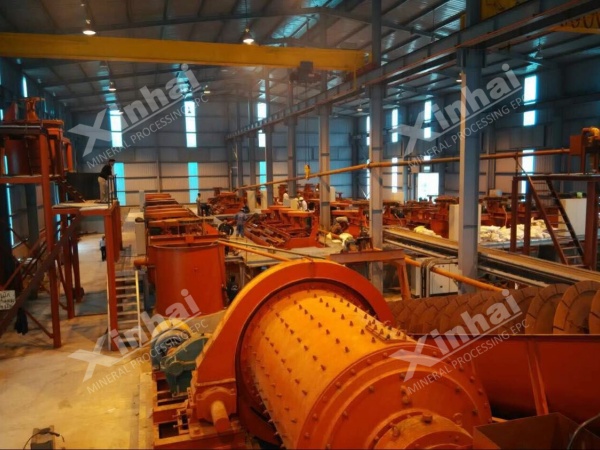If you want to know more information (such as product/process price, etc.), please contact us 24-hour telephone
Against the backdrop of a global market where the value of flake graphite continues to rise, advanced beneficiation companies are realizing double breakthroughs through fine process regulation and intelligent reagent pairing. This paper reveals 5 core optimization paths to help the processing plant to maintain the integrity of the flake, while increasing the concentrate fixed carbon content to 96% +, the comprehensive recovery rate breakthrough 85% technical barrier.
1. Precise particle size control technology
Adopting laser particle size analyzer for real-time monitoring, the primary grinding target is locked in the 0.15-0.3mm range (≥65%), and the secondary regrinding is controlled at 45-75μm. The practice of a graphite mine in Utah, U.S.A. has shown that this program has increased the retention rate of large flake (+100 mesh) by 27%.
2. Media innovation program
Rod mill group: adopting high chrome alloy rods (HRC58-62) to replace traditional steel balls, the impact crushing rate is reduced by 40%.
Column mill unit: equipped with wave-shaped liner to realize laminar crushing, unit energy consumption decreased by 18%.
Ceramic media application: for high purity graphite, zirconium oxide media is used to avoid iron pollution

1. Three-stage intelligent sorting system
Roughing section: rapid stripping of 90% of vein stones (residence time <3min)
Selection section: three-step flotation (concentration gradient 25%→18%→12%)
Sweeping section: high-frequency micro-bubble generator to recover micro-fine particles (-325 mesh)
2. Scale grading protection strategy
Introduction of HydroFloat® graded flotation tanks at pH 8.5-9.2:
+80 mesh scale: rapid recovery in a single tank
-80 mesh particles: into conventional process
Large scale breakage reduced from 22% to 7% at a plant in Quebec, Canada.
1. Dynamic Dosing System for Trapping Agents
| Ore Type | Main Capture Agent | Synergizer | Dosage (g/t) |
|---|---|---|---|
| Crystalline Graphite | Kerosene Emulsion (70%) | Dodecyl Trisulfide | 450-600 |
| Cryptocrystalline Graphite | Methyl Isobutyl Methanol | Methyl Oleate | 550-750 |
| Weathered Ore | Alkyl Flavonoid Complex | Nonionic Surfactants | 800-1000 |
2. pH-inhibitor synergistic control
Dose-response modeling of lime (800-1200g/t) and water glass (300-500g/t) to achieve silicate inhibition efficiency ≥92% through ORP monitoring
1. Digital twin test platform
Single-factor test: establish grinding time-scale size response surface
Orthogonal test: L16(4^5) matrix optimization of 5-variable combinations
CFD simulation: Predicting flotation cell hydrodynamic characteristics
2. Production validation metrics
Closed circuit test data from the Pilanesberg project in South Africa show:
Concentrate fixed carbon: 96.2%→98.5%
Pharmacy cost: $2.8/t → $1.9/t
Tailings grade: 18.3%→12.7
The current cutting-edge technology has realized DCS intelligent control of flotation process, and real-time adjustment of pharmaceutical system through online XRF analyzer. It is recommended that the plant establish an ore database and adopt modular process design to adapt to different deposit characteristics. Our EPCM team can provide customized solutions to help customers upgrade their flotation systems within 12 months and shorten the return on investment to 18 months.